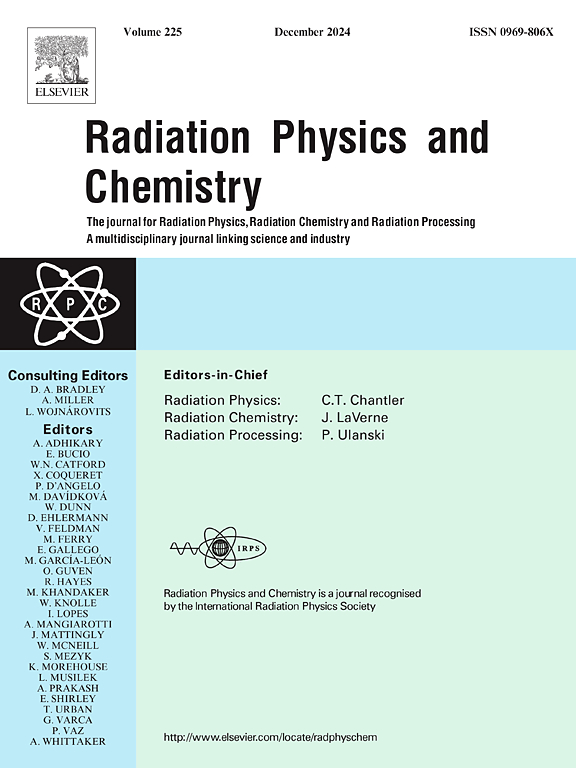评估沙特阿拉伯一所大学医院医护人员的职业辐射暴露趋势和安全干预措施
IF 2.8
3区 物理与天体物理
Q3 CHEMISTRY, PHYSICAL
引用次数: 0
摘要
本研究调查了50名医疗保健专业人员的职业辐射暴露水平,包括放射技师、护士和放射科医生,在2020年至2022年期间,对一所大学医院诊断放射学和核医学部门的各种操作场景中的辐射剂量进行了监测,其中男性约占54%,女性约占46%。记录的最低辐射暴露量为0.11毫西弗,最高为0.88毫西弗,所有数值均低于20毫西弗的建议安全限值。结果表明,由于与大流行相关的业务变化,这两个部门在2020年都减少了辐射暴露,但随后几年呈现出不同的趋势。诊断放射科稳定了辐射水平,表明安全方案的有效改进。相比之下,核医学部门观察到辐射暴露的增加令人担忧,突出了需要加强安全措施的领域。一个机器学习线性回归模型已经被用来检验各种预测变量和辐射水平之间的关系。结果表明,这些预测因子只能解释辐射水平变化的9.2%。这项研究强调了持续监测和量身定制的干预措施的重要性,以确保辐射工作人员的健康和安全,反映了医疗保健实践的动态变化和对强有力的辐射安全框架的迫切需要。本文章由计算机程序翻译,如有差异,请以英文原文为准。
Assessing occupational radiation exposure trends and safety interventions for healthcare professionals at a university hospital in Saudi Arabia
This study investigates the occupational radiation exposure levels among 50 healthcare professionals, including Radiographers, Nurses, and Radiologists, who were monitored for radiation doses across various operational scenarios within the Diagnostic Radiology and Nuclear Medicine departments at a university hospital, consisting of approximately 54 % males and 46 % females, from 2020 to 2022. The lowest recorded radiation exposure was 0.11 mSv, and the highest was 0.88 mSv, with all values remaining below the recommended safety limit of 20 mSv. Results indicate that both departments experienced reduced radiation exposure in 2020 due to pandemic-related operational changes, with subsequent years showing divergent trends. The Diagnostic Radiology department stabilized radiation levels, suggesting effective refinement of safety protocols. In contrast, the Nuclear Medicine department observed a concerning increase in radiation exposure, highlighting areas needing enhanced safety measures. A Machine Learning Linear Regression model has been used to examine the relationship between various predictor variables and the radiation levels. The result shows that these predictors explain only about 9.2 % of the variance in radiation levels. This study underscores the importance of continuous monitoring and tailored interventions to ensure the health and safety of radiation workers, reflecting dynamic changes in healthcare practices and the critical need for robust radiation safety frameworks.
求助全文
通过发布文献求助,成功后即可免费获取论文全文。
去求助
来源期刊

Radiation Physics and Chemistry
化学-核科学技术
CiteScore
5.60
自引率
17.20%
发文量
574
审稿时长
12 weeks
期刊介绍:
Radiation Physics and Chemistry is a multidisciplinary journal that provides a medium for publication of substantial and original papers, reviews, and short communications which focus on research and developments involving ionizing radiation in radiation physics, radiation chemistry and radiation processing.
The journal aims to publish papers with significance to an international audience, containing substantial novelty and scientific impact. The Editors reserve the rights to reject, with or without external review, papers that do not meet these criteria. This could include papers that are very similar to previous publications, only with changed target substrates, employed materials, analyzed sites and experimental methods, report results without presenting new insights and/or hypothesis testing, or do not focus on the radiation effects.
 求助内容:
求助内容: 应助结果提醒方式:
应助结果提醒方式:


